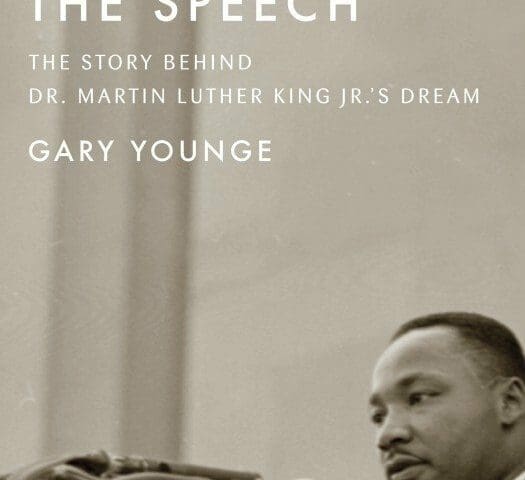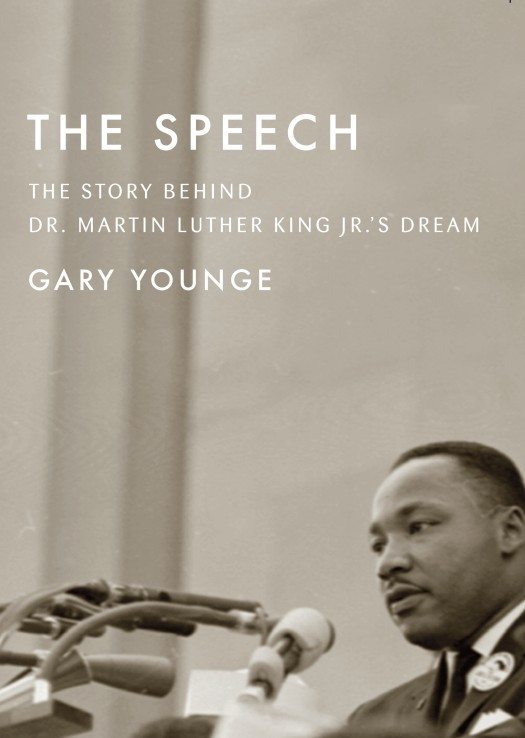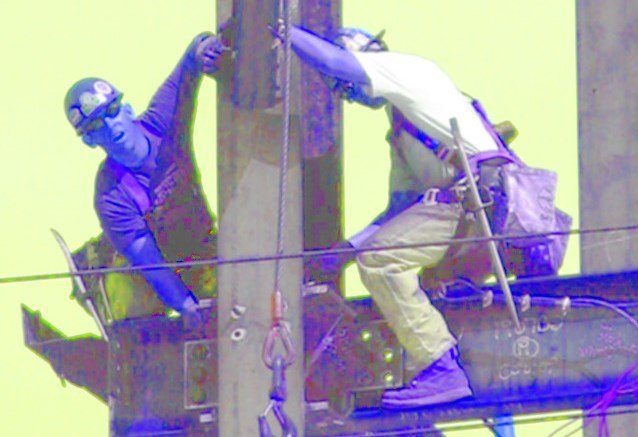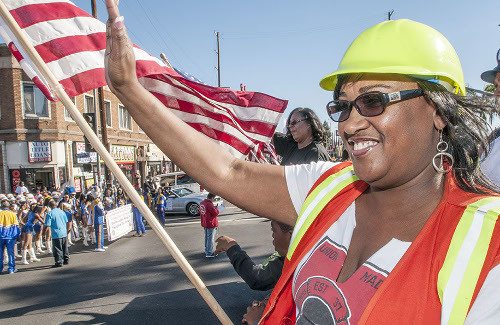


Today is a big day for Lionsgate Entertainment, and we want to help celebrate. That’s why on the occasion of the annual shareholder’s meeting of this hugely successful film company (taking place right now in Toronto), AFM musicians are proud to present a musical tribute to Lionsgate and its executive leadership – a little number we call “Right Here at the Top.”
AFM musicians created the song as part of our efforts to draw attention to Lionsgate’s destructive offshoring of musical scoring work, even as it simultaneously takes millions in tax dollars — moneys intended to enrich our communities. Of course the story told by the CEO in our song may not be exactly the story told by Lionsgate’s executives to their shareholders. But wait –– what’s that? The executives at Lionsgate fail to provide important information to their beloved shareholders?


 August 28th marked the 51st anniversary of the historic March on Washington for Jobs and Freedom. On that sweltering day in 1963, amidst an atmosphere of racial tension stoked by political indecisiveness, as well as acts of violent Southern resistance defined by bombings and bloody protests, 250,000 Americans converged on the National Mall. There, facing the Lincoln Memorial, educators, clergymen, entertainers, civil rights leaders, politicians and ordinary citizens listened to a day of speeches, prayers and song. They had gathered so that their voices could be heard throughout the nation, but one voice on that day would be heard above all others.
August 28th marked the 51st anniversary of the historic March on Washington for Jobs and Freedom. On that sweltering day in 1963, amidst an atmosphere of racial tension stoked by political indecisiveness, as well as acts of violent Southern resistance defined by bombings and bloody protests, 250,000 Americans converged on the National Mall. There, facing the Lincoln Memorial, educators, clergymen, entertainers, civil rights leaders, politicians and ordinary citizens listened to a day of speeches, prayers and song. They had gathered so that their voices could be heard throughout the nation, but one voice on that day would be heard above all others.
Dr. Martin Luther King Jr. was the last speaker when he delivered his “I Have a Dream” speech. That historic oration is the subject of The Speech: The Story Behind Dr. Martin Luther King Jr.’s Dream, by Chicago-based journalist Gary Younge. Its four chapters brim with key insights and revelations about those troubled times,
» Read more about: Gary Younge on MLK’s Most Famous Speech »



Readers of Capital & Main are all too familiar with wage theft and job misclassification – twin plagues that afflict American workers, especially truck drivers at the Los Angeles and Long Beach ports. Employers use wage theft to shortchange employees out of their wages and benefits by shaving hours off time cards; job misclassification, on the other hand, allows companies to deny that the people working for them are even employees at all, but freelancers who are ineligible for government-provided benefits such as unemployment insurance and workers’ compensation. By misclassifying their workers, employers do not pay the kinds of payroll taxes that provide these and other services to workers.
Now, thanks to an epic investigative series published yesterday by the McClatchy news syndicate (publisher of the Sacramento Bee), in partnership with ProPublica, these two issues have been pushed before a national audience.
» Read more about: News Series Exposes Massive Employer Fraud in Construction »



In 2012 California’s construction industry took in a respectable $152 billion, employed nearly a million workers and is now projected to grow 26 percent by 2020. But according to a recently released report, a pall is threatening to settle over this otherwise bright horizon. Sinking Underground: The Growing Informal Economy in California Construction identifies an ever-expanding segment of workers in the industry who are not reported by their employers or are misclassified as independent contractors—characteristics of the “informal economy,” or what is more commonly referred to as an underground economy.
The study’s disturbing research suggests that informal construction, which benefits the state’s unscrupulous labor brokers and contractors, and the real estate developers who hire them, is partly responsible for the hollowing out of California’s middle class.
Sinking Underground was conducted by the Economic Roundtable and tracked labor statistics from 1972 to 2012.
» Read more about: Study: Cheaters Prosper in State’s Informal Construction Economy »



The latest sign that the nation’s 14-year romance with the for-profit cyber charter industry might be cooling came last week when the Board of Trustees for Pennsylvania’s scandal-plagued Agora Cyber Charter School discussed completely severing its relationship with K12 Inc., the nation’s largest for-profit cyber charter management and curriculum supplier.
The action came nearly three weeks after an August 5 vote by Agora’s board to not renew its management contract with the online learning giant beginning with the 2015-16 school year.
Agora had been the jewel of K12’s 29-state network of virtual charters, accounting for 14 percent of the company’s annual revenues of $848.2 million. So when news of the August 5 decision came to light during an August 14 K12 Fourth Quarter investor conference call, it sent K12’s high-performing stock into a nearly 13-point tailspin. The call-in’s moment of revelation can be heard here:
» Read more about: Cyber Charter School Revolt Against K12 Inc. Continues »



Whenever the subject of raising hourly pay to a livable level comes up in Los Angeles, you can expect two stalwart foes: The Chamber of Commerce and the Central City Association. They both represent business and they always argue that paying working people a wage they can live on will hurt business owners. I cannot recall a time they ever claimed anything else.
But now a new voice from the business community has surveyed the field of low-wage work and come up with a conclusion quite opposite the Chamber’s and the Association’s. A member of the faculty at MIT’s Sloan School of Management (named after a former president of General Motors, no less) compared wages and company results among sales people and check-out clerks. These jobs happen to rank one and two in the number of employees in the country, and they are notorious for low pay, part-time hours and oppressive working environments.

For many, the legacy of Labor Day has been forgotten. We forget about the struggle that so many fought and even died for to achieve decent working conditions. We take for granted that children no longer have to slave away in American factories for 17 hours a day, six days a week. We undervalue what it took to get the weekend. After all, that’s what makes Labor Day such a treat in the first place–we get a three-day weekend instead of the boring old two. And for those of us still lucky enough, the 40-hour work week is just the standard.
Longtime president and founder of the American Federation of Labor, Samuel Gompers said:
“Labor Day differs in every essential way from the other holidays of the year in any country. All other holidays are in a more or less degree connected with conflicts and battles of man’s prowess over man,



35th Annual Labor Day Parade: Join the L.A. labor movement as we celebrate Labor Day weekend!
Monday, September 1
Parade begins 10 a.m., Broad Ave. and E Street
Rally and picnic start noon, Banning Park
Wilmington, CA
Download Flyer
For more information, contact the Labor Day Committee at (562) 595-1891
Labor Day Concert with Sheila E, Eric Benet and Irvin Mayfield Quintet
Monday, September 1
Doors open 4 p.m., concert starts 5 p.m.
Conga Room at L.A. Live
Download Concert Flyer. For more information or to purchase tickets, contact Todd Hawkins at todd@thetoddgroup.net or (213) 300-9342.


Assembly Bill 1522, created to give all California workers at least three days of paid sick leave, passed the legislature Friday, but with a key change: In-home health-care workers who assist disabled and elderly Californians will now be excluded from coverage. The compromise resulted in two important union backers of the bill, authored by Assemblywoman Lorena Gonzalez (D-San Diego), to withdraw their support.
According to the Sacramento Bee, “The Service Employees International Union and the American Federation of State, County and Municipal Employees abandoned the bill after it was rewritten to exempt home health-care workers.”
Another closely watched measure, Senate Bill 270, also passed its final hurdle Friday, the Los Angeles Times reports. The bill, authored by senators Alex Padilla (D-Pacoima), Kevin de Leon (D-Los Angeles) and Ricardo Lara (D-Huntington Park/Long Beach), will ban single-use plastic bags in grocery stores and other retail outlets.


In a victory for public safety over private profitability, Senate Bill 1019 passed the state Assembly and Senate with strong bipartisan consent on August 27 and 28. Known as the Consumers’ Right to Know: Flame Retardants in Furniture bill, the measure – introduced by Senator Mark Leno, (D-San Francisco) — requires upholstered furniture manufacturers to disclose to consumers the use or absence of flame retardant chemicals on furniture labels.
“SB 1019 gives consumers what they have demanded for decades—the right to know what is in their furniture and the power to make an informed decision about whether to purchase it,” Leno said in a press statement.
Given SB 1019’s diverse support—from business associations to consumer groups, environmental organizations and labor unions—it appears likely Governor Brown will sign the bill by the September 30 legislative deadline, after which it would take effect January 1, 2015.
Getting business on board with SB 1019 proved to be a critical turning point for the bill.
» Read more about: Public Safety, Worker Protection Bills Advance to Governor’s Desk »